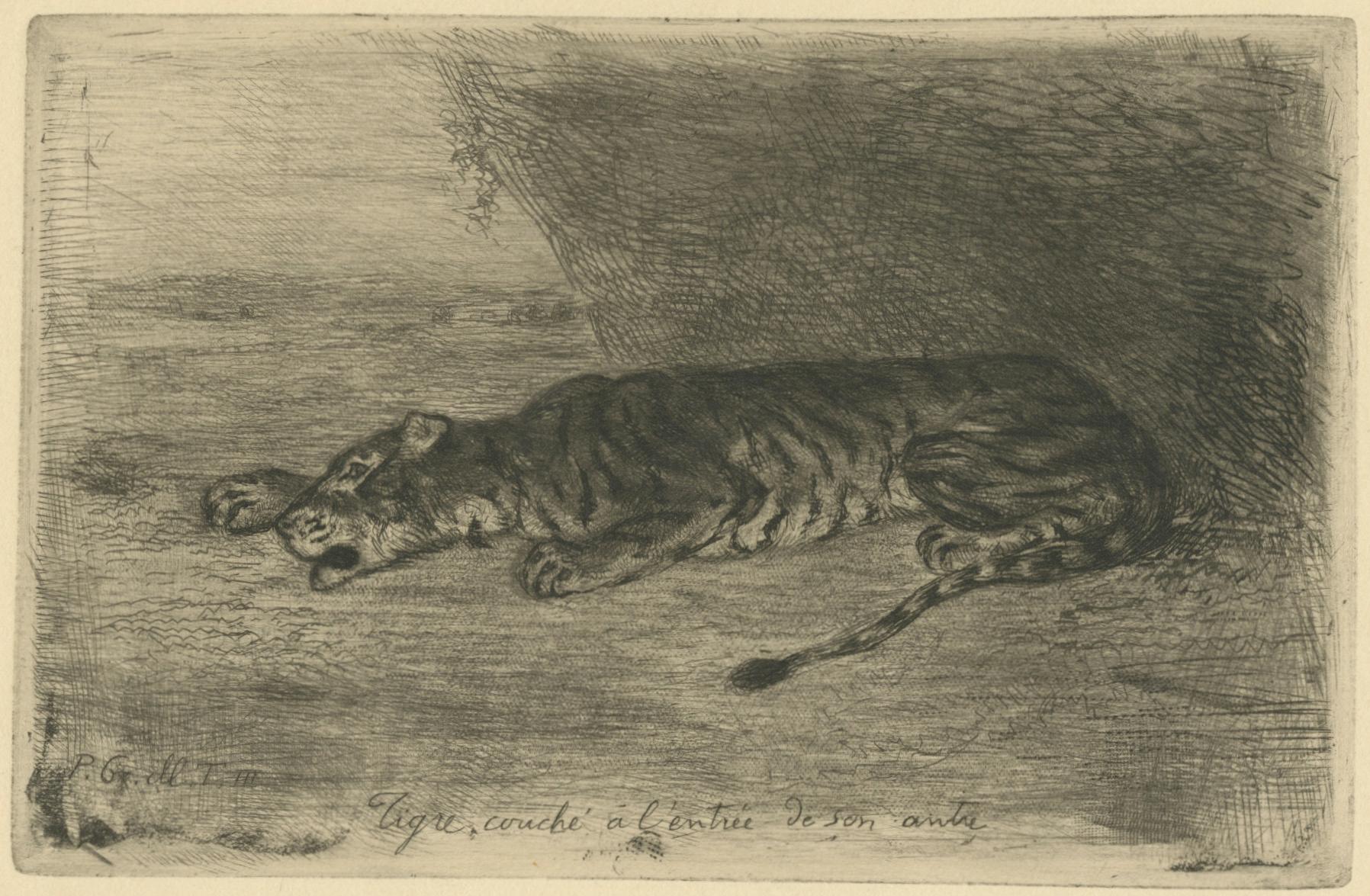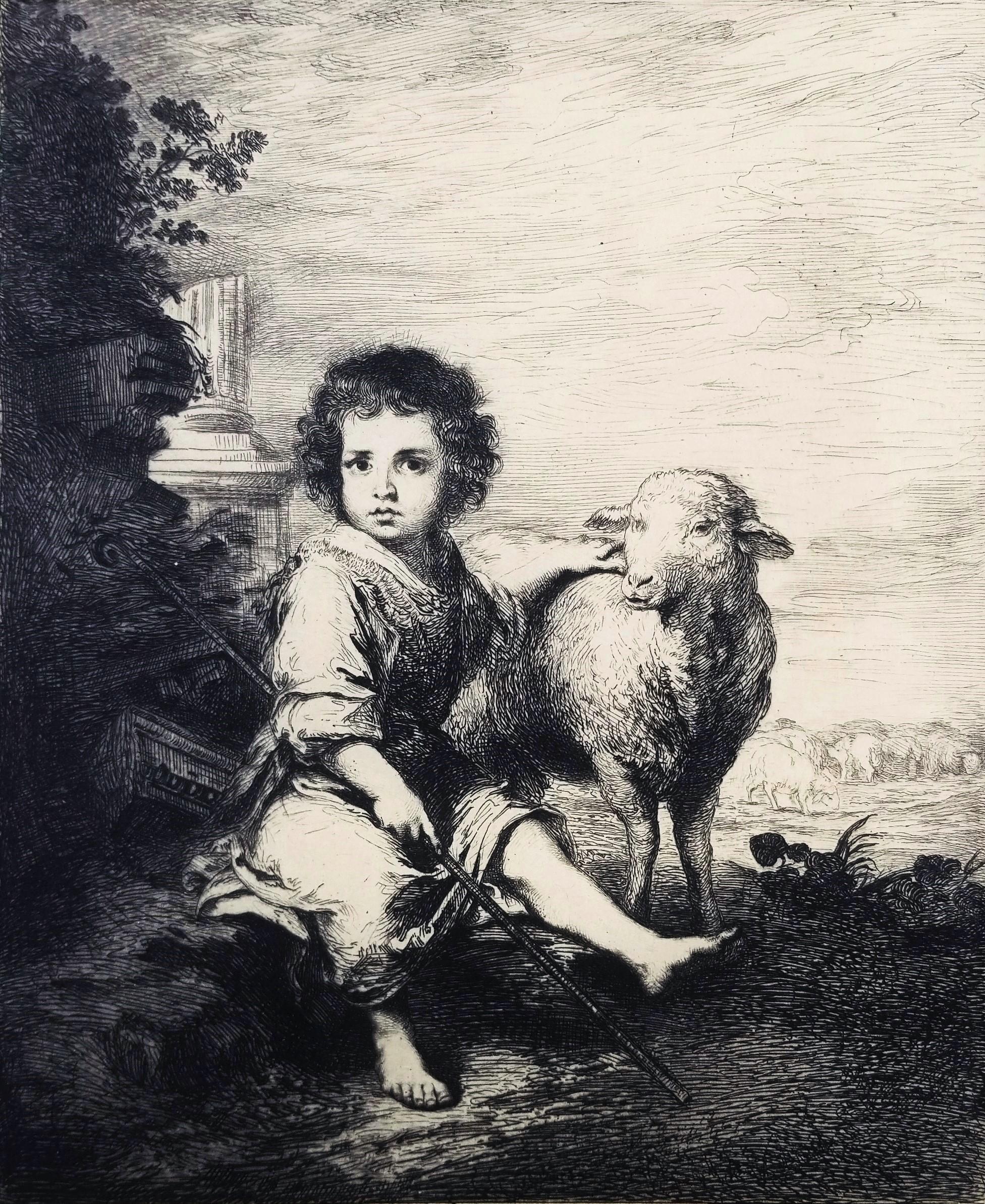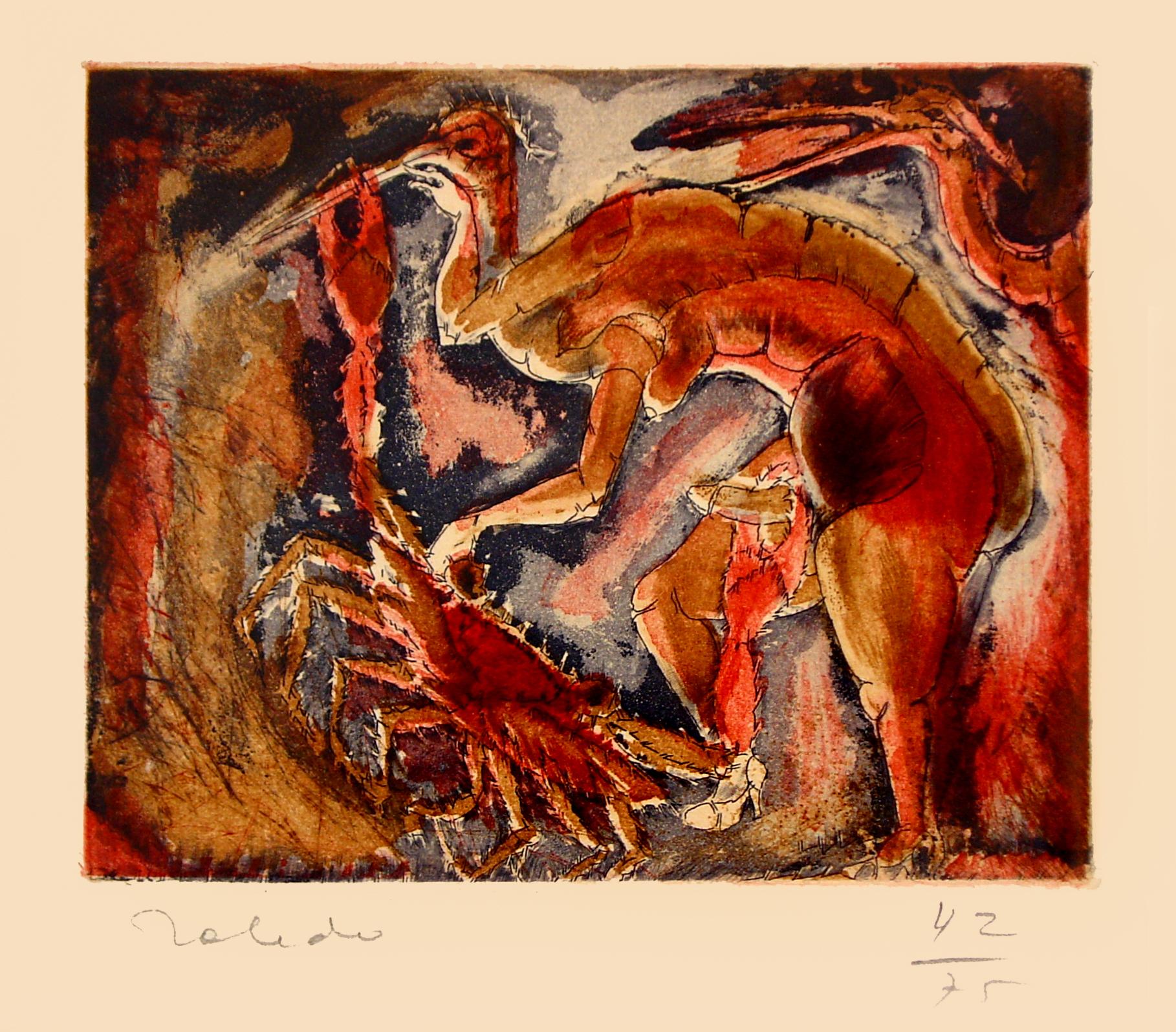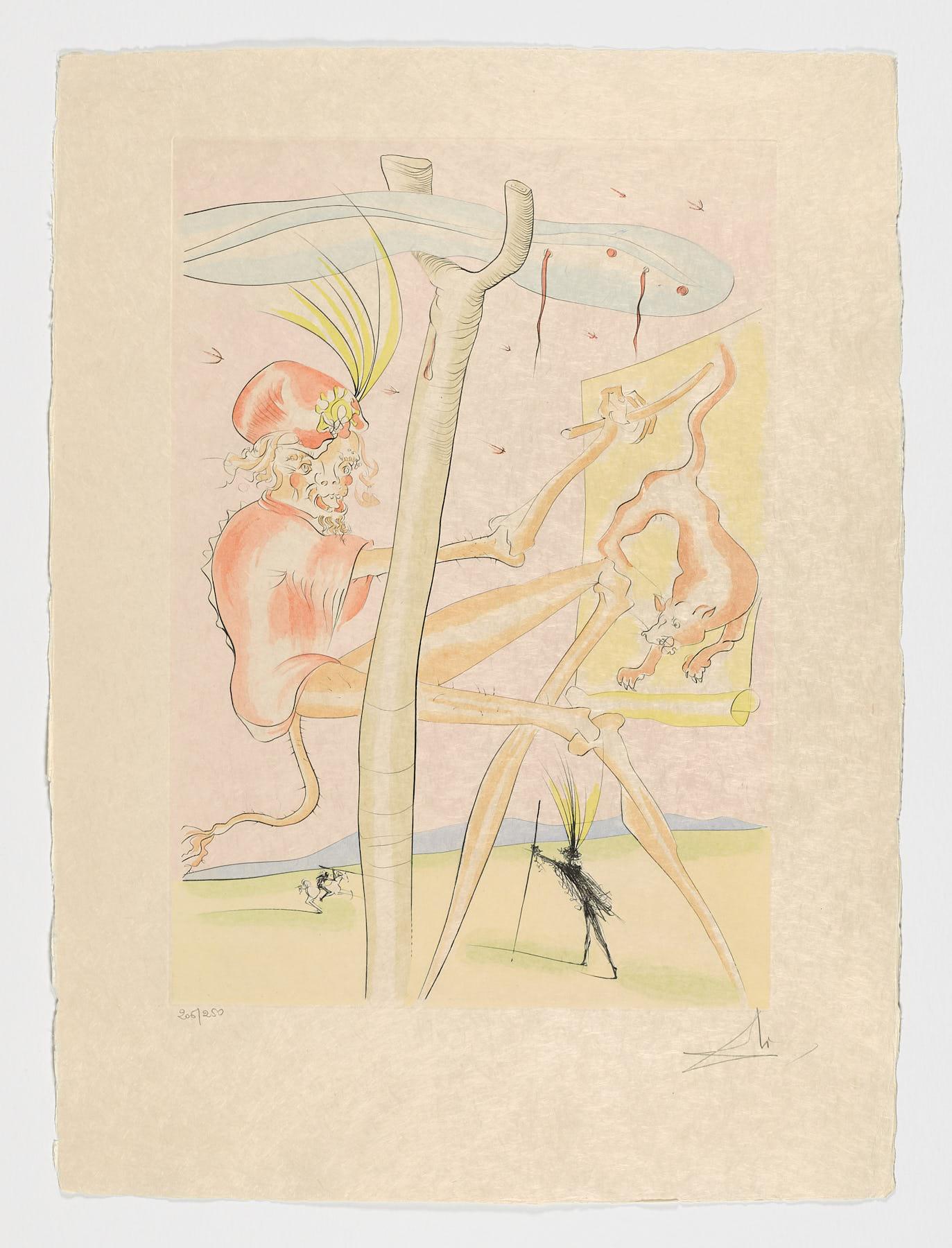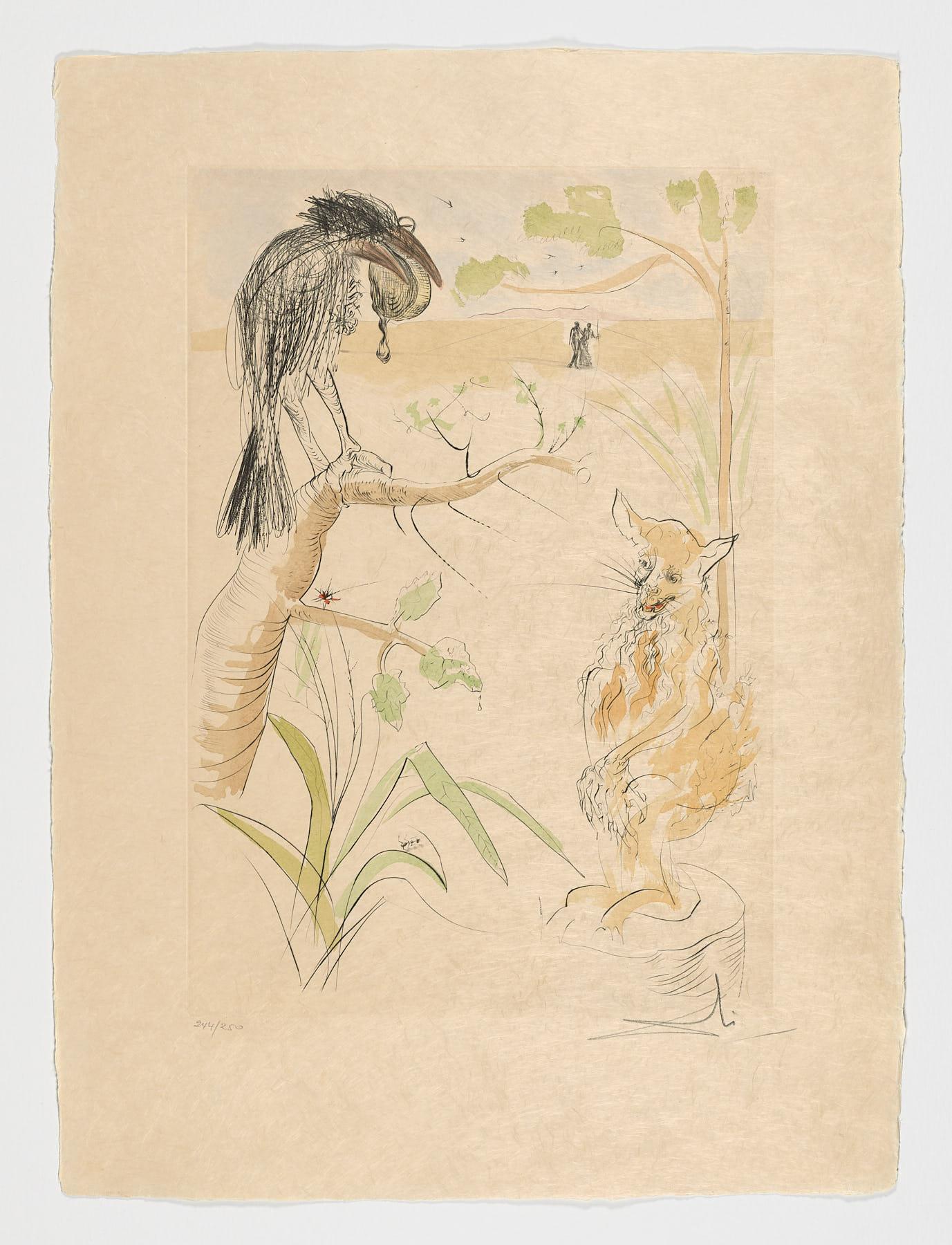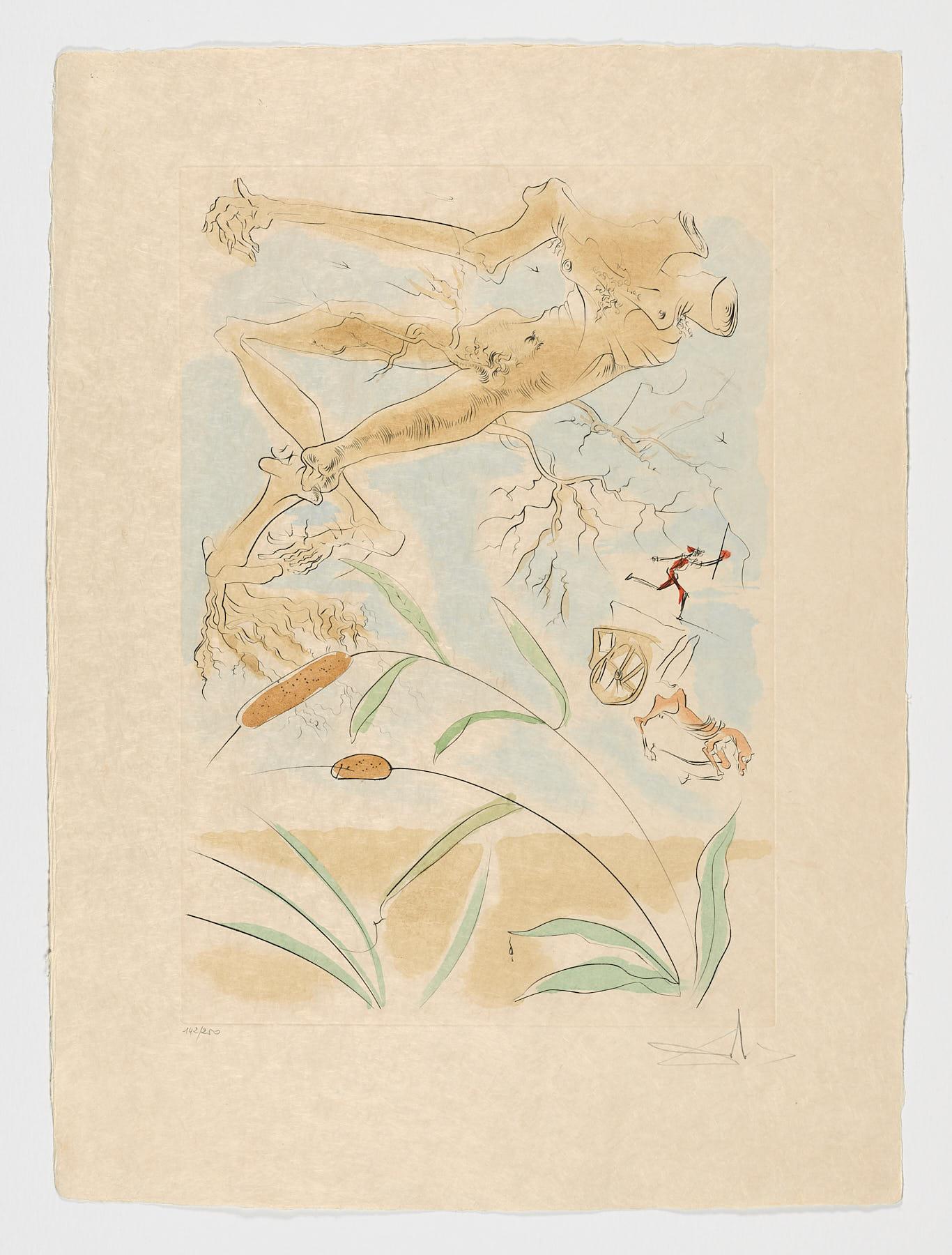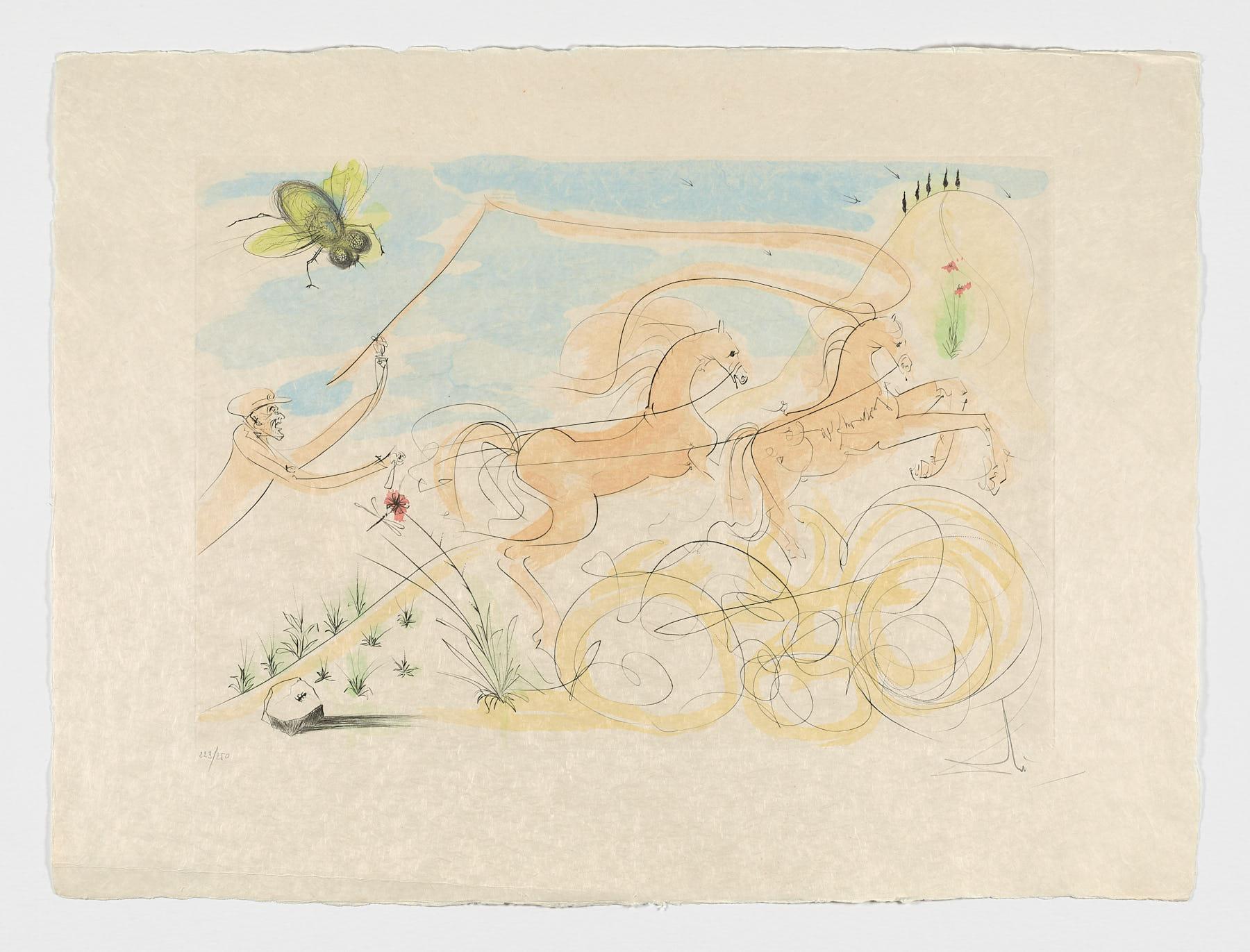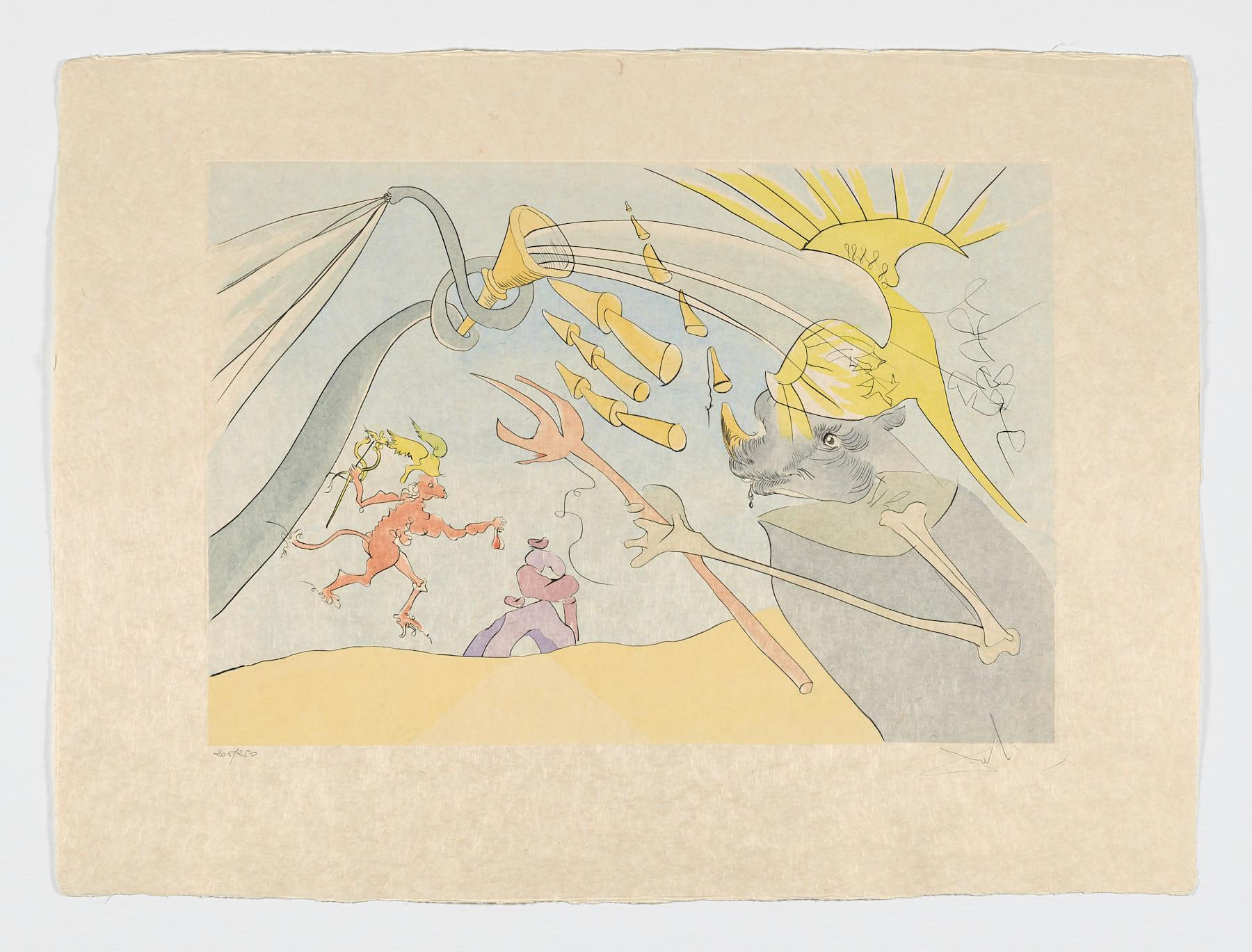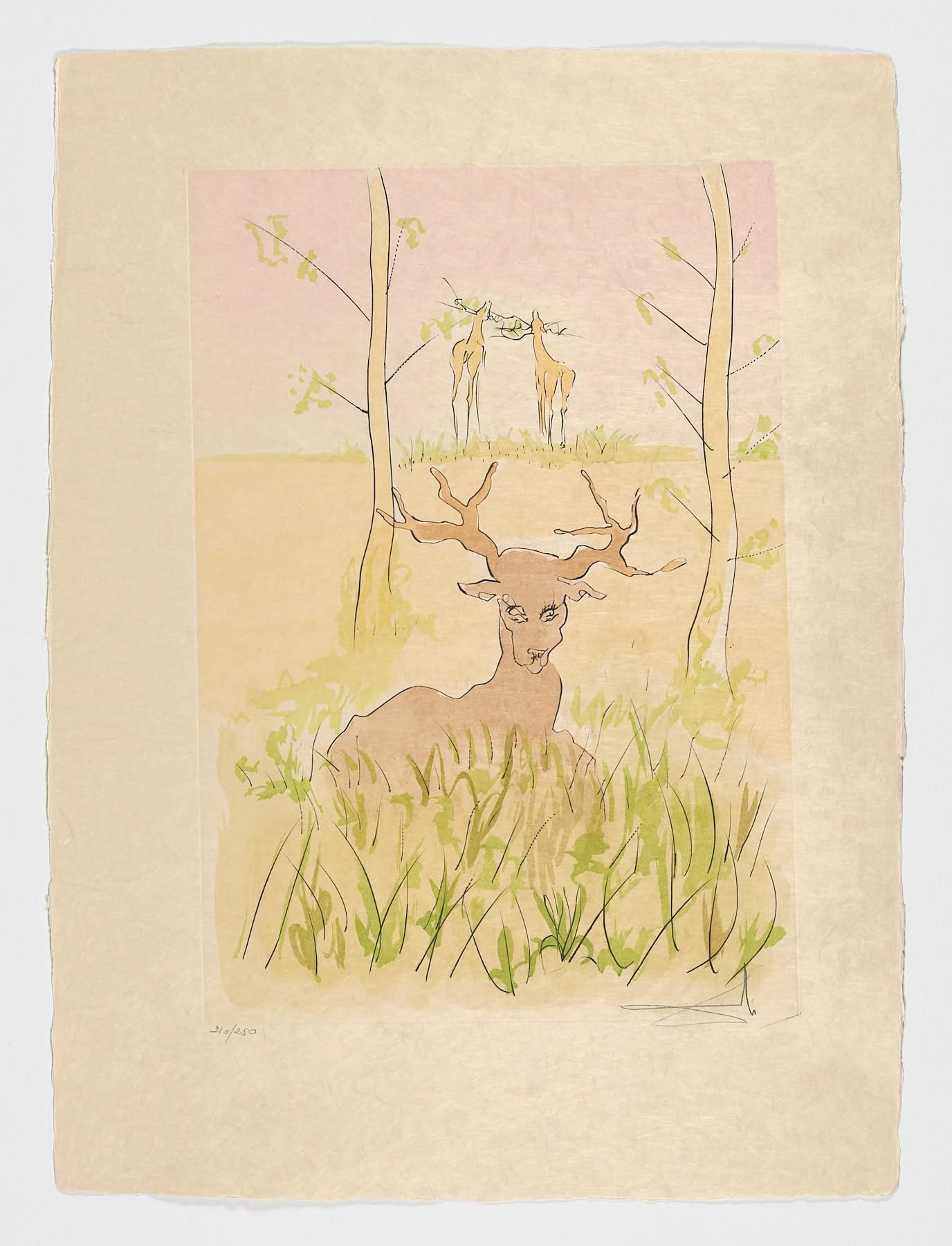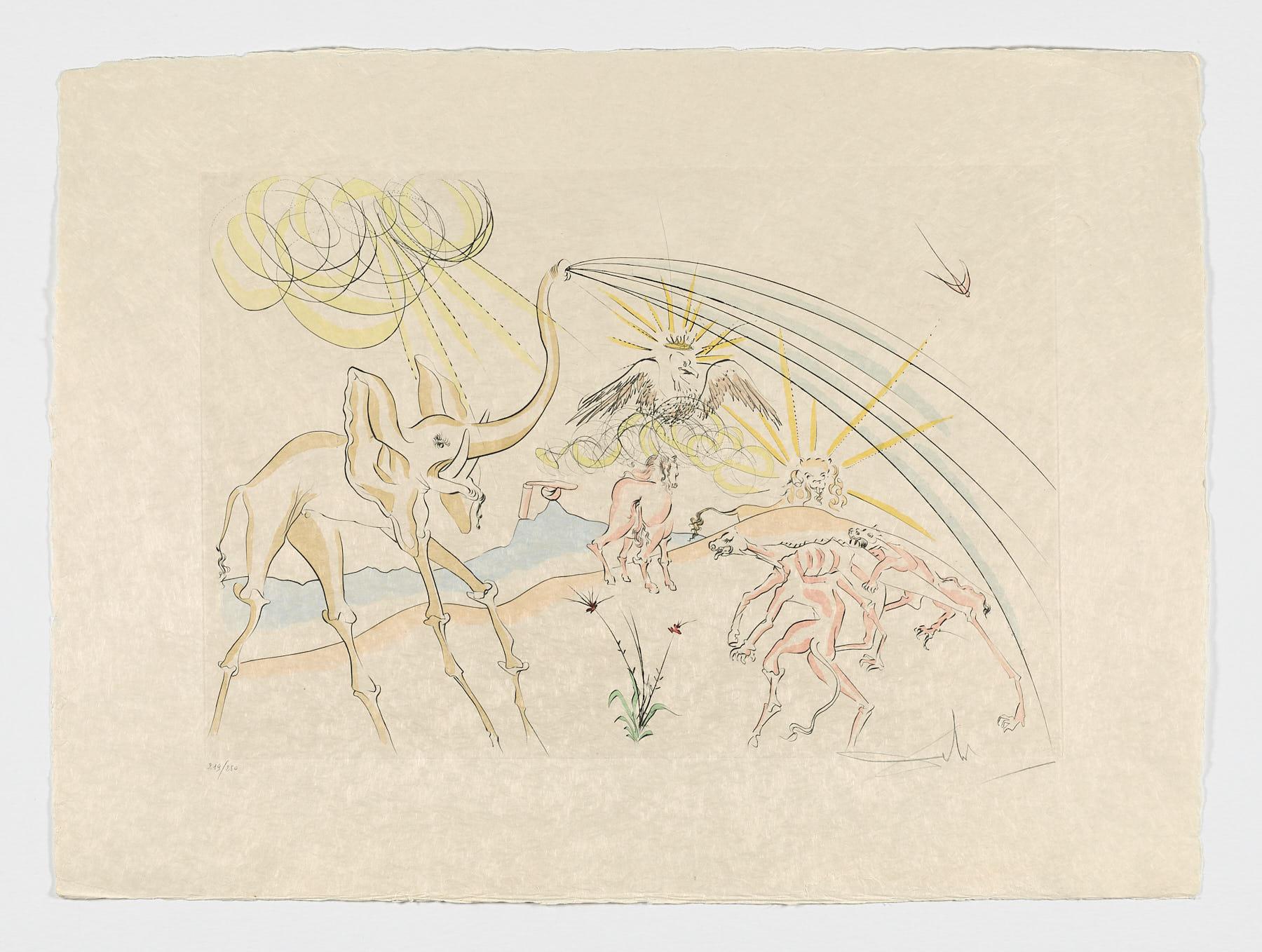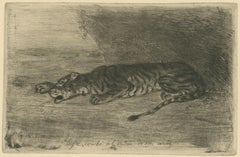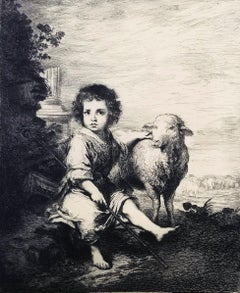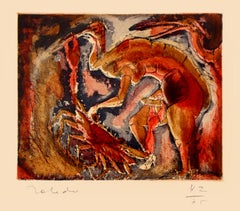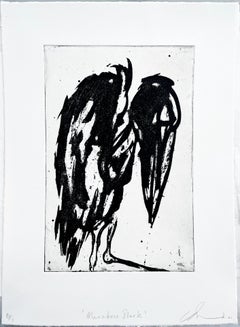
MARABOU STORK, 2021 Etching, aquatint and dry point
View Similar Items
1 of 1
Chris BurnsMARABOU STORK, 2021 Etching, aquatint and dry point 2021
2021
About the Item
- Creator:Chris Burns (1968, British)
- Creation Year:2021
- Dimensions:Height: 11.82 in (30 cm)Width: 7.88 in (20 cm)Depth: 0.08 in (2 mm)
- Medium:
- Period:
- Framing:Framing Options Available
- Condition:
- Gallery Location:London, GB
- Reference Number:1stDibs: LU172829549842
You May Also Like
- Tigre couché à l'entrée de son antre (Tiger Lying at the Entrance to its Lair)By Eugène DelacroixLocated in Middletown, NYEtching, drypoint, and roulette on watermarked Hallines cream laid paper, 3 3/4 x 5 7/8 inches (95 x 148 mm), full margins. A very good impression of this charming image, with all of...Category
Early 19th Century Realist Animal Prints
MaterialsLaid Paper, Drypoint, Etching
- Le Divin Berger (The Divine Shepherd) /// Old Masters Boy Sheep Etching AntiqueLocated in Saint Augustine, FLArtist: Charles Waltner (French, 1846-1925) Title: "Le Divin Berger (The Divine Shepherd)" Portfolio: Gazette des Beaux-Arts Year: 1875 Medium: Original Etching and Drypoint on cream...Category
1870s Old Masters Animal Prints
MaterialsIntaglio, Etching, Drypoint, Laid Paper
- CANGREJO MANO LARGABy Francisco ToledoLocated in New York, NYpaper: 22 x 15 in. printed image: 4 3/4 x 6 in. english translation: Long Hand Crab LatinCategory
Late 20th Century Post-Modern Animal Prints
MaterialsArchival Paper, Drypoint, Etching, Aquatint
- PEINTRE AU TRAVAIL (BLOCH 1157)By Pablo PicassoLocated in Aventura, FLEtching, aquatint, drypoint and scraper, on Rives BFK paper. Hand signed and numbered by Pablo Picasso. Published by Galerie Louise Leiris, Paris. Image size 12.125 x 18.125 inches. ...Category
1930s Cubist Animal Prints
MaterialsDrypoint, Paper, Aquatint, Engraving
- Spanish Artist hand signed limited edition original art print drypoint n9By Salvador DalíLocated in Miami, FLSalvador Dali (Spain, 1904-1989) 'Le Singe et le Léopard', 1974 Serie: Le Bestiaire de La Fontaine dry point, aquatint on japanese paper 30.8 x 22.7 in. (78 x 57.5 cm.) Edition of 25...Category
1970s Surrealist Prints and Multiples
MaterialsDrypoint, Paper, Aquatint
- Spanish Artist hand signed limited edition original art print drypoint n8By Salvador DalíLocated in Miami, FLSalvador Dali (Spain, 1904-1989) 'La Cour du Lion', 1974 Serie: Le Bestiaire de La Fontaine dry point, aquatint on japanese paper 30.8 x 22.9 in. (78 x 58 cm.) Edition of 250 Unframed ID: DAL2001-008 Hand-signed by author It appears reviewed in the catalog raisonné: The official catalog of the graphic works of Salvador Dalí. Albert Field. Page: 2/93. Nr. 74-1 C. ______________________________________________________ Salvador Felipe Jacinto Dalí i Domènech was a Spanish painter, sculptor, engraver, set designer and writer of the 20th century. An artist associated with surrealism, he is one of the most important figures in 20th century art, representing the archetype of the spectacular contemporary multifaceted artist. He develops his creative activity in various fields through the most diverse cultural formulas: painting, written media, performing arts, cinema, or public appearances in the press, radio, cinema, advertising, television, etc. Master of the most refined pictorial technique, especially drawing, along with various aesthetic languages - from impressionism, cubism, purism or late ultraism with Dadaist edges to the most radical surrealism, hyperrealism, pop-art or art optical—, will absorb every influence that is useful to build its own and personal language, halfway between technical tradition and thematic avant-garde. His paranoid-critical method is his main contribution to the surrealist movement and to the history of art as a new creative model with which Dalí's theories acquire theoretical entity - thanks to the successive interpretations that the Empordà artist made of his readings of Dalí's work. Sigmund Freud—and practice, applying it as a revealing liquid of images that can be represented plastically through multiple images, anamorphisms, relational mirages, irrational and heterogeneous symbolic images, pseudohallucinations, childhood memories, atavisms, obsessive ideas, etc., and recreating a polyphonic method capable of critically relating any visual or sensitive experience. With his method, Dalí makes paranoid delirium a whole mode of expression of an art that introduces us to the concrete irrationality that inhabits every creative process, constructing not only his works, but also his own character. as an artist. In Dalí, the relationship between his work and his personal history becomes evident. Much of the most significant biographical facts for the artist are implicitly or explicitly present in the content of his work and are the explanation of his complex and contradictory personality. In 1910, at the age of 6, he was enrolled by his father in the Hispano-French school of the Immaculate Conception of Figueres, where he learned French, his future language of culture. Dalí's first contact with Impressionism occurred in 1916, when he spent some time on the outskirts of Figueres, specifically at the Molí de la Torre estate, property of the Pichot family (intellectuals and artists), where he was the collection of the painter Ramón Pichot. In 1919 he participated for the first time in a group exhibition in the halls of the Societat de Concerts, and with a group of friends from the institute founded the magazine Studium, in which he published his first writings. A year later he moved to Madrid to study at the School of Fine Arts. In 1922 he won his first prize at the Concurs-exposició d'obres d'art originals d'students, held at the Galeries Dalmau (Barcelona). This same year he attended the School of Painting, Sculpture and Engraving in Madrid (Royal Academy of Fine Arts of San Fernando), and lived in the Student Residence, where he became friends with prominent personalities such as Luis Buñuel, Federico García Lorca, Pedro Garfias , Eugenio Montes, or Pepín Bello. However, a year later he was expelled from the Academy for his rebellious and revolutionary character, accused of leading a protest. It would be in 1927 when his surrealist period began, after having traveled to the Netherlands and France, meeting Flemish painters and Picasso. In Paris itself, in 1929, through Joan Miró, he came into contact with a group of surrealists headed...Category
1970s Surrealist Prints and Multiples
MaterialsDrypoint, Paper, Aquatint
